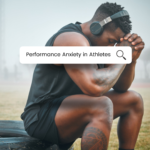Neurofeedback, a form of biofeedback that focuses on brain activity, has become a popular tool for athletes looking to improve their sports performance. By providing real-time information about brainwave patterns, neurofeedback allows athletes to train their brains to work more efficiently and effectively, ultimately leading to better performance on the field, court, or track. In this article, we’ll delve into the ways neurofeedback can significantly improve sports performance, and how athletes across various disciplines are benefiting from this cutting-edge technology.
1. Enhancing Attention and Focus
a. The Importance of Focus in Sports
One of the primary ways neurofeedback can improve sports performance is by enhancing an athlete’s attention and focus. In any sport, the ability to concentrate and remain focused on the task at hand is crucial to success. Athletes must be able to block out distractions, maintain a high level of mental alertness, and react quickly to changing situations. Neurofeedback helps to train the brain to achieve this heightened level of focus, ultimately leading to better overall performance.
b. How Neurofeedback Improves Focus
Neurofeedback works by providing real-time feedback about an individual’s brainwave patterns. By monitoring these patterns, athletes can learn to regulate their brain activity and achieve a more optimal state for focus and concentration. Over time, this training can lead to improved attention, faster reaction times, and increased mental endurance – all essential components of successful sports performance.
c. Neurofeedback in Action: Professional Athletes and Teams Utilizing Focus Training
Many professional athletes and teams have turned to neurofeedback to improve focus and concentration. For example, members of the US Olympic Ski Team, Olympic beach-volleyball player Kerri Walsh-Jennings, and members of the Italian soccer team have all used neurofeedback as part of their training regimens. In fact, when Italy won the World Cup for soccer in 2006, members of the team credited neurofeedback as their secret weapon in achieving success.
2. Improving Emotional Control
a. The Role of Emotions in Sports Performance
Another significant way that neurofeedback can improve sports performance is by helping athletes better regulate their emotions. In high-pressure situations, athletes must be able to control their emotions and remain calm, focused, and confident. Anxiety, stress, and self-doubt can all negatively impact performance, making emotional control a vital component of success in sports.
b. How Neurofeedback Enhances Emotional Regulation
Through neurofeedback training, athletes can learn to recognize and manage their emotional responses to various stimuli. By monitoring brainwave patterns associated with stress, anxiety, and other negative emotions, athletes can train their brains to respond more adaptively to challenging situations. This improved emotional regulation can lead to decreased anxiety, better stress management, and increased resilience under pressure – all of which contribute to better sports performance.
c. Case Studies: Athletes Benefiting from Emotional Control Training
Numerous athletes have found success in using neurofeedback to improve their emotional control. For example, professional golfer Padraig Harrington has used neurofeedback to help manage his stress and anxiety during high-pressure tournaments. Similarly, tennis star Novak Djokovic has credited neurofeedback with helping him to remain calm and focused during critical moments in matches.
3. Slowing Cognitive Decline
a. The Impact of Aging on Sports Performance
As athletes age, their cognitive abilities naturally begin to decline. This can lead to slower reaction times, decreased focus, and impaired decision-making – all of which can negatively impact sports performance. Just as physical training is necessary to maintain optimal physical fitness, brain training is essential to preserving cognitive function as athletes age.
b. How Neurofeedback Helps Maintain Cognitive Function
Neurofeedback acts as a form of exercise for the brain, helping to keep cognitive abilities sharp and functioning at their highest capacity. By training the brain to maintain optimal brainwave patterns, neurofeedback can help slow the natural decline in cognitive function associated with aging. This can lead to improved focus, faster reaction times, and better overall sports performance as athletes age.
c. Examples of Athletes Using Neurofeedback to Combat Cognitive Decline
Notable athletes who have used neurofeedback to maintain their cognitive abilities as they age include NBA player Chris Kaman and Formula One driver Rubens Barrichello. Both athletes have reported improvements in focus, concentration, and overall cognitive function as a result of their neurofeedback training.
4. Enhancing Sleep Quality
a. The Connection Between Sleep and Sports Performance
Sleep plays a critical role in an athlete’s overall health and sports performance. Adequate, high-quality sleep is necessary for cognitive function, physical recovery, and injury prevention. Athletes who consistently get insufficient or poor-quality sleep may experience declines in performance, increased risk of injury, and reduced overall health.
b. How Neurofeedback Improves Sleep
Neurofeedback has been shown to improve sleep quality by regulating brainwave patterns associated with restful sleep. Through neurofeedback training, athletes can learn to achieve the optimal brain states necessary for deep, restorative sleep. This improved sleep quality can lead to better cognitive function, faster recovery from physical exertion, and a reduced risk of injury – all of which contribute to better sports performance.
c. Athletes and Teams Embracing Sleep Optimization
Many athletes and sports teams have recognized the importance of sleep for optimal performance and have incorporated neurofeedback into their training programs to improve sleep quality. For example, the NFL’s Seattle Seahawks have used neurofeedback as part of their comprehensive sleep optimization program, resulting in improved performance and reduced injury rates.
5. Restoring Brain Function After Traumatic Brain Injury
a. The Risk of Traumatic Brain Injury in Sports
Traumatic brain injuries (TBIs) are a significant concern for athletes, particularly in contact sports such as football, soccer, and hockey. TBIs can result from a single severe incident or from repeated, less severe impacts over time. These injuries can lead to cognitive impairments, emotional dysregulation, balance issues, and other problems that negatively impact sports performance.
b. How Neurofeedback Aids in Brain Injury Recovery
Neurofeedback can play a crucial role in helping athletes recover from TBIs by promoting neuroplasticity – the brain’s ability to reorganize itself and form new neural connections. By monitoring brainwave patterns and providing feedback to guide the brain toward more optimal functioning, neurofeedback can help restore normal cognitive and emotional function after a brain injury.
c. Success Stories: Athletes Overcoming Traumatic Brain Injuries with Neurofeedback
Several athletes have successfully used neurofeedback to recover from TBIs and return to their sports. For example, NHL player Sidney Crosby underwent neurofeedback treatment after suffering a severe concussion, which ultimately helped him return to the ice and continue his successful career. Similarly, professional snowboarder Kevin Pearce used neurofeedback as part of his recovery from a traumatic brain injury sustained during a training accident.
In conclusion, neurofeedback offers a range of benefits for athletes looking to improve their sports performance. From enhancing focus and emotional control to slowing cognitive decline and aiding in brain injury recovery, this innovative technology has the potential to revolutionize the way athletes train and compete. As more athletes and teams embrace neurofeedback as part of their training programs, we can expect to see even greater advancements in sports performance in the years to come.





